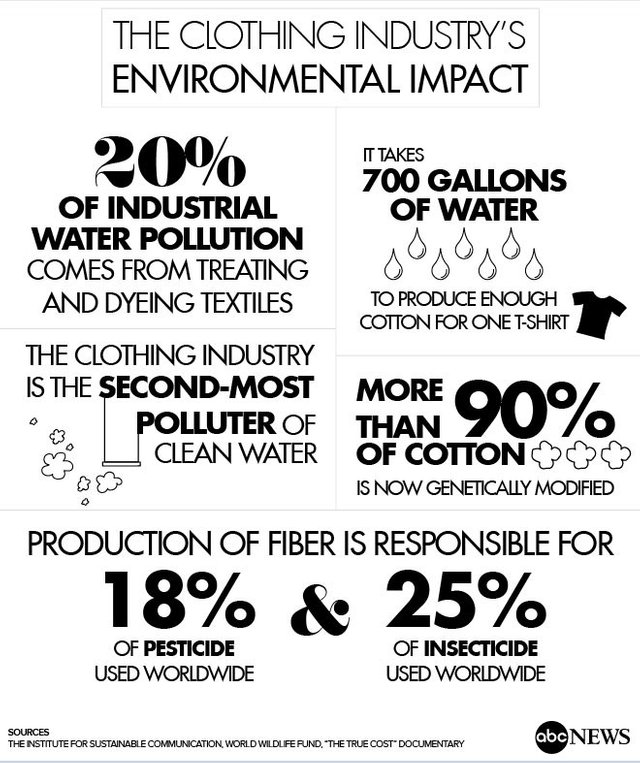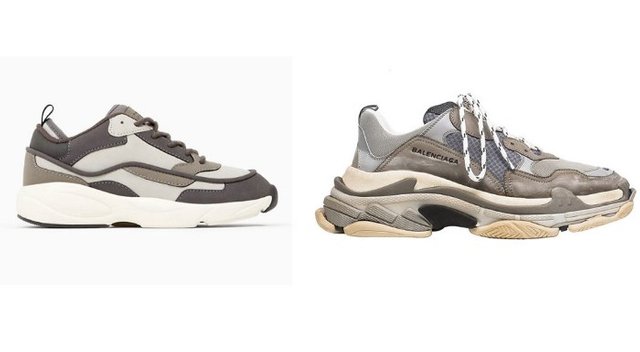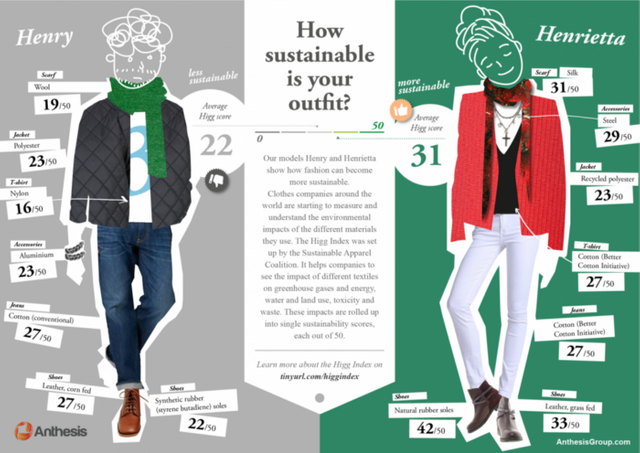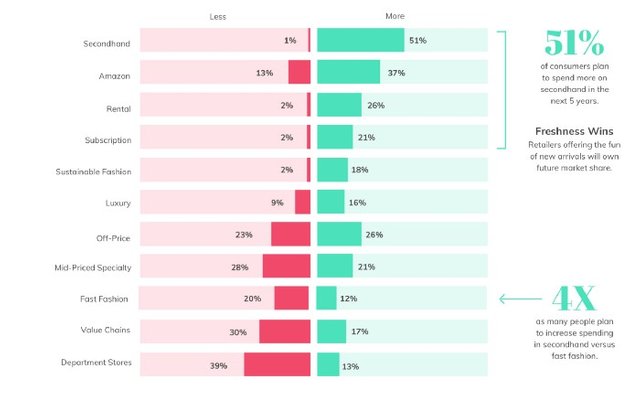What is Wrong with Fast Fashion
Most of us had done it before. We’ve seen a nice designer piece, or a trendy garment and we absolutely needed it. But usually, a person can’t drop a couple thousand dollars on a pair of ripped jeans.

So what would the regular person do? They’d go to Zara, H&M, or Topman and find the next best thing. And usually, it can’t be beat. Okay, quality garments for low prices and all a quick car ride or click away. But it’s never really that simple, and fast fashion costs way more than what you may see on the rack.
The term “fast fashion” refers to a phenomenon in the fashion industry whereby production processes are expedited in order to get new trends to the market as quickly and cheaply as possible. As a result of this trend, the tradition of introducing new fashion lines on a seasonal basis is being challenged.
Today, it is not uncommon for fast-fashion retailers to introduce new products multiple times in a single week.” If you google the term “fast fashion,” then you’re likely to get a definition like the one posted above. Unfortunately, this doesn’t paint a clear picture of exactly what fast fashion entails, and it certainly doesn’t touch on why we at Socially Conscious Brands refuse to promote any product that was made this way.
In case you’re unfamiliar with this manufacturing process, here are a few key points:
Fashion Brands are part of a $3 Trillion dollar industries, but many of their products are made by workers who operate in dangerously unsafe conditions, making pennies a day.
Fast Fashion accounts for some of the highest levels of inequality and environmental destruction the world has ever seen.
There are over 40 million garment makers, and they are widely considered to be among the lowest paid workers in the world.
85% of those workers are women, many of whom have to abandon their families for long hours in the factory.
Because of the disposable nature of Fast Fashion garments, the world now consumes about 80 billion new pieces of clothing a year.

Creativity

Fast fashion isn’t known for its originality.
Up until the second half of the 20th century, the fashion cycle was structured around 2 collections per year, the Spring-Summer and the Fall-Winter collection. Each collection was conceived over a two-year period previous to its release during a fashion show.
In this time, any element connected to a garment’s style, quality, material and heritage was discussed and reviewed in depth to provide not only a piece of clothing but a true societal statement.
It’s during these decades that luxury brands were able to identify their recognisable stylistic identity and create those iconic pieces that to this day have never gone out of fashion.
OK, so we have made it pretty clear that the speed of fashion today is having a negative impact on the creative ebb and flow of major fashion houses, but how and why did this need for speed arise in the first place?
One only has to look so far as the fast fashion cycle to see the answer unfold. Responsible for producing as many as 52 micro-seasons per year, fast fashion conglomerates are major money machines.

International in scope and dubious in practice, they are able to cut corners faster and cheaper than anyone else in order to deliver products to the consumer first. And so, naturally, the consumer has come to expect this kind of speed from all their clothing purchases.
The entire industry, which also happens to be one the world’s most wasteful, is built around the idea that trendy clothes should be available to consumers at accessible price points.
Sometimes that means altering a trend to make it a little more wearable for the average consumer ― but often, fast fashion brands produce garments that look like they were ripped straight from the catwalk.
Well, as we already mentioned fast fashion is an adaption by the retailers to mimic what is strut down the ramps in the form of catwalks. Converting ‘trendy pieces’ to make it wearable, the retailers are toning it down and basically creating a Walmart version of the big luxury brands.
Even cheaper options are springing up eventually on Instagram stores which are an advocate to fake and pirated goods; thus creating a bigger notorious market or being the thrust to ‘bootleg brush’.
Retail giants like H&M and Forever 21 are best known for low prices and on trend designer inspired designs. While the masses seem to be obsessed with fast fashion retailers, some wonder if the fast fashion model is ruining the industry’s creativity. While we’ve seen high end designers meet these mass retailers have way by doing collaborations like the Balmain and Alexander Wang for H&M there have also been all all court wars over designer copyright infringement.
What do you think? Has the consumers appetite for fashion increased far beyond designers creative ability just to keep up with how quickly mass retailers are able to turn around new styles? Are we all addicted to what’s new? At what point do we invest in our wardrobe piece by piece and savor each style moment?
https://miro.medium.com/max/700/0*M9bGYSTc3Vbj-oTP
Quality
The need for speed when acts as a compromise on creative integrity, it is also bound to have an impact on the quality offered. This means that the reputation of the brand is also sacrificed in the race to offer the latest trends to consumers first. In the clout of fashion brands, there are often instances when consumers end up looking like twins walking down streets because it is the same kind of clothes sported on the hangers of most retail shops.
It Ends Up Costing You More

Think about sale. Sales are happening much more often
When I walk around the city or go online-shopping, I can see offers, vouchers and sales being on all year round.
What that does is that we tend to see reduced prices and we think that we are making a bargain — when in fact, these pieces were already calculated with that margin but that’s another additional topic I just wanted to touch upon.
The thing is, because the goods being so cheap, we buy more than what we need. This turns out to cost more if you think about the times you end up wearing it. Let’s say you buy 10 pieces for one Euro each, from which you each piece wear once. That’s 10 times wearing clothes. Instead you could have bought one piece for 10 Euro and wear it 20 times.
Of course it is not said, that more expensive results in better quality, but generally speaking a piece produced at such low cost is most likely to have poor quality.
Your clothes won’t last. — Most of the clothes we buy from fast fashion brands are most likely to never be worn out, simply because they won’t be used that often or for that long. The whole concept behind fast fashion is to make you swap your clothes for new ones on a regular basis as you know from the above points already.
However, even washing some of the clothes for one time, may result that you won’t be wearing them anymore. For example, how many times have you washed a T-shirt from H&M and the side stitches got all messed up?
In terms of durability most fast fashion items won’t either have a timeless design that you can wear in five years from now or they won’t even have the quality to stay in shape for many years to come.
Return of investment is low
Last but not least, the reason why you should seriously consider not buying your clothes from Fast Fashion retailers is the ROI. ROI is an acronym for Return on Investment.
Consider this: buying high quality products that will last you many years, will result in a higher ROI for you than buying cheap made fashion that will only last you one season. You are more likely to achieve a lower ROI with fast fashion items because their concept is to not last.
Therefore, increase the ROI for your clothes by buying sustainable brands, buying second-hand, buying more basics, or
simply keep on wearing what your wardrobe has to give you.

Overall, fast fashion brands know exactly their impact on our consumption and the environment, which is why they are greenwashing their brands with ‘recyclable’ clothing, shoes and jeans made out of ocean plastic or offering you to give your old clothes to them to recycle.
Originally published at https://fadedmix.com on July 18, 2019.